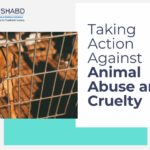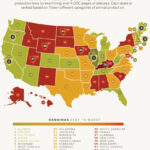Animal cruelty syndrome represents a complex interplay of psychological disturbances and aberrant behaviors manifested in the mistreatment of animals. As we delve into this phenomenon, it is critical to recognize that animal cruelty is not just an individual act of violence; it signifies deeper psychological issues that may be impairing a person’s ability to empathize with living beings. Understanding these red flags becomes pivotal in not only addressing the immediate concerns regarding animal abuse but also unearthing the underlying motivations propelling such reprehensible behavior.
At its core, animal cruelty can be an outward expression of turmoil within an individual’s psyche. The term “syndrome” suggests that there exists a repetitive pattern of behavior tied to emotional and psychological disturbances. Some researchers contend that individuals who engage in acts of animal cruelty may be exhibiting symptoms linked to broader psychological conditions such as conduct disorder, antisocial personality disorder, or other emotional dysregulations.
One of the most striking manifestations of animal cruelty syndrome is the fascination with dominance and control. Individuals may derive a sense of empowerment from exerting force over vulnerable beings. This power dynamic often correlates with experiences of powerlessness or victimization in their own lives. For instance, children exposed to abusive environments may find solace in asserting their dominance over animals, mirroring the aggression they have witnessed or experienced. The act of inflicting pain can become a misguided coping mechanism, allowing the perpetrator a semblance of control in an otherwise chaotic world.
Furthermore, the psychological complexities of cruelty extend beyond mere aggression. Emotional detachment or lack of empathy is another significant red flag. Individuals exhibiting this detachment might not view animals as sentient beings capable of suffering and pain. This perspective can stem from various factors, including upbringing, cultural norms, and social conditioning. An individual raised in an environment where animal suffering is normalized may grow into adulthood without developing adequate empathy toward animals. Such emotional disconnect often leads to a cavalier attitude toward animal welfare, perpetuating a cycle of neglect and abuse that can be exceedingly challenging to break.
Moreover, when assessing behavior indicative of animal cruelty syndrome, attention must be given to patterns of impulsivity. Impulsive behaviors may lead individuals to lash out at animals without forethought or consideration of the consequences. This lack of foresight often signifies an underlying inability to regulate one’s emotions and impulses, which is akin to findings observed in individuals with other behavioral disorders. In such cases, the abuse may be episodic, characterized by bursts of aggression that coincide with heightened stress or frustration in the individual’s life.
In exploring these behaviors, one must also consider the connection between animal cruelty and developmental issues. Children who display aggression toward animals often bear witness to violence in their own environments. Studies show a strong correlation between early exposure to violence—whether it be domestic violence or abuse toward animals—and the subsequent manifestation of aggressive behaviors. Recognizing these signs in children can lead to timely interventions, fostering healthier relationships with animals and mitigating future behavioral problems.
Additionally, it is vital to acknowledge the potential link between animal cruelty and broader societal issues. The desensitization to violence often nurtured by media, combined with a lack of education regarding animal welfare, can create an environment where cruelty becomes normalized. The portrayal of violence against animals in films or video games can enmesh individuals in narratives that glorify aggression. This portrayal can further galvanize a fascination with cruelty, transforming what is an ethical quandary into a macabre source of entertainment.
As we dissect the phenomena surrounding animal cruelty syndrome, it is indispensable to emphasize the implications for broader society. The behaviors manifested in individuals prone to animal abuse often transcend the immediate acts of cruelty; they may signify deeper social maladies, including emotional dysregulation and interpersonal difficulties. These individuals may be prime candidates for interventions aimed at correcting maladaptive thoughts and behaviors. Programs designed to foster empathy, emotional intelligence, and ethical treatment of animals can play a crucial role in reforming these patterns, facilitating personal growth and healing.
Furthermore, community awareness initiatives can help cultivate a culture of compassion. Empowering individuals to speak out against animal abuse forms a robust network of support that can rehabilitate not only animals but also individuals tangled in cruelty. By raising awareness about the psychological impacts of animal cruelty and sharing information about preventive measures and therapeutic resources, society can take significant strides toward mitigation and rehabilitation.
In conclusion, understanding animal cruelty syndrome is paramount in addressing not only the immediate implications of animal abuse but also in unraveling the intricate web of psychological factors at play. By recognizing the red flags associated with this syndrome—fascination with dominance, emotional detachment, impulsivity, and the societal normalization of violence—we elevate the discourse surrounding animal protection. Such recognition is the cornerstone of effective intervention strategies aimed at fostering empathy and promoting a world where animal abuse is not just acknowledged but actively suppressed. The interplay of psychology and behavior in animal cruelty ultimately challenges us to reflect upon our relationships with animals and underscores the vital need for compassionate coexistence.







